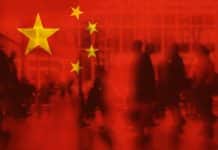How does a market for a new product emerge in the face of cultural barriers? Marketing life insurance in China has never been easy, as the topic of early death is a deeply ingrained taboo subject. Transnational and domestic life insurance firms, however, have pursued different strategies when dealing with local cultural resistance. While transnational firms have upheld a profit-oriented model and attempted to remove the local cultural obstacles, domestic firms have adopted a market-share approach as they try to accommodate local preferences. Interestingly, the rapid growth of the Chinese life insurance market can be largely attributed to the novice domestic players’ unconventional business strategies. The market that has emerged is one with a trajectory and characteristics distinct from those in Euro-American contexts. These characteristics highlight the strong influence of local cultures on market formation.
How do companies sell life insurance in a country where death is a taboo subject? Home to one-fifth of the world’s population and noted for its impressive economic growth, China has become a primary target for the global expansion of commercial life insurance. In the fall of 1992, a subsidiary of AIG, American International Assurance Company, Ltd. (AIA), was the first among its competitors to obtain a license to operate in Shanghai, gaining the first toehold in the People’s Republic of China (PRC). It quickly discovered, however, that creating a demand for life insurance in China would not be a simple process. Although urban China with its dramatic economic growth and diminishing state-provided benefits provided a favorable economic and institutional context for life insurance to emerge, cultural conditions were not similarly conducive. In 1998, then Chairman and CEO of Aetna Insurance Company, Richard Huber, commented that a bigger obstacle to the life insurance business than China’s bureaucracy was its culture.1 Likewise, the General Manager of a Sino-German joint-venture life insurer in China complained, in an interview with this author in 2000, that the Chinese still held “a stupid superstitious belief” that the topic of death should be avoided at all costs.
As the first transnational life insurer in the PRC, AIA initially faced no competitors. However, it did face the distinct challenge of selling to a population with basically no idea of what life insurance was. This foreign insurer therefore set forth in its mission to educate the public about the concept of life insurance. It defined life insurance as a new, modern, and effective risk management instrument, as protection against misfortunes. The first two products AIA offered were personal accident policies that covered death, dismemberment, and medical and hospital fees incurred by an accident. To sell these products, AIA underscored the protective function of insurance and trained their sales agents to go door to door, telling people stories of misfortunes happening to families without insurance. They used a similar rhetoric of “love” and “responsibility,” as in the sales discourses typically invoked in the American life insurance market. However, this strategy was not well received in the PRC, and the agents using it faced not only rejection, but contempt, suspicion, and even hostility. Despite AIA’s effort to raise people’s sense of risk in order to introduce a new form of risk management, the population at large refused to entertain the possibility of premature death or other fatal misfortunes. AIA’s agents complained that even couples with young children refused to buy accident policies that cost very little for a high-insured amount.
The local resistance to the idea of insuring against early death in China can be traced to the taboo on thinking and talking about death, especially premature death. This taboo is rooted in traditional Chinese concepts of life and death that portray early death as extremely horrifying. In contrast to Western philosophy where death is a central theme, in China, death has traditionally not been explicitly addressed much at all. Crucially, the Confucian notion of death does not imply the possibility of eternity as it does in Christianity. Death is largely treated as an untouchable topic in Confucianism, where it is only mentioned as something that is unknown. Of course, for many peoples death is a mystery, but the Chinese’s avoidance of the topic further mystifies and intensifies a general sense of fear regarding death. Furthermore, when death is mentioned, it is consistently cast in negative terms: for example, folk Buddhism has bred the idea of a cruel hell and a damp, cold, “dark world” that gives death a dreaded and terrifying image. Hell is believed to be reserved for those with bad karma, who receive numerous cruel punishments. The dark world is said to hold the majority of commoners, who then become ghosts awaiting reincarnation. These folk beliefs surrounding hell and the dark world have continued to have an influence even in the contemporary era.
In addition to this pervasive negative view of death, the Chinese also have specific beliefs associated with the timing and nature of death, which can be traced to folk Taoism. Taoism advances the idea that the degree to which a death is seen as terrifying depends on when and how the death occurs. A good death is dying when one is old and has lived a full life, that is, one with descendants and dignity toward the end of the life. An awful death is dying without offspring or dying prematurely. So the most feared death is unexpected premature death, as when a young person dies suddenly due to an accident or an illness. This kind of death is spiritually dangerous, as the dead are “cheated out of their lives” and therefore turn to “hungry ghosts.” Premature death is a deeply ingrained taboo topic. The collective observance of this taboo has diverted the Chinese’s attention away from fatal accidents, regardless whether or not they hold beliefs about hell, the dark world, or ghosts.
In response to the difficulties of selling products associated with premature death, AIA introduced a new whole life policy called LES that proved popular in Hong Kong. This policy served mainly a protective function for the beneficiary, because the insured amount was paid out only upon the death of the insured. Surprisingly, AIA sold quite a lot of these policies. A senior agent of AIA, in an interview with the author, explained why it was popular:
“The LES carries an incremental dividend…. When we sold this product, we first talked to the prospects about the importance of protection and risk management. When we found that the prospects didn’t like to listen to what we had to say, we instead began to talk about dividends. Very often, when they heard about dividends, they liked it. They bought it as a kind of investment.”
LES was the first life insurance product that brought AIA to the public’s attention. By highlighting the dividend feature of the policy, the sales agents invoked the money management aspect of life insurance to legitimize this new commodity. Nonetheless, the mission of educating the public about the risk management concept of life insurance had not been achieved. It was this unfinished mission that in part doomed AIA to lose market share to the domestic insurers in 1996 and after.
In 1996–1997, AIA was shocked by an unexpected, sudden explosion in life insurance sales. Life premium income in Shanghai experienced 57.3 percent growth in 1996 and 98.5 percent in 1997. The term baoxian, which is literally translated as “insurance” but is often referred to as “life insurance,” became popular and known to the general public. The most surprising thing about this newfound popularity was that it was brought about by a new domestic insurer: Ping An Life Insurance Company of China, Ltd (Ping An). Founded in 1988, Ping An did not have an actuary or a trained underwriter when it joined the life insurance industry in 1994. But within four years, Ping An’s revenue from individual life policies in Shanghai reached 1.71 billion yuan (US$206.6 million), while AIA’s was only 74.7 million yuan (US$90.3 million). This newly emerged domestic insurer held over 46 percent of the total individual life premium income in Shanghai, capturing the largest market share among all competitors. How did it achieve this astounding success?
Although a novice life insurer, Ping An quickly proved its sensitivity and responsiveness to local demand and preferences. Three products, all serving primarily a savings function, dramatically boosted its sales. These included a whole life endowment, a whole life annuity, and a child endowment-annuity policy. The products were designed according to the locals’ habits of saving, their concerns about life during retirement, and their child-centered way of life. Savings have long been an established risk management practice of the Chinese and have remained a top priority for Chinese families, despite the emergence of a consumer society. In 1995, China’s gross national and urban household savings rates reached 40 percent and 21 percent, respectively. Ping An capitalized on this local penchant for savings when designing its products. Sales of these products did not have to address the troublesome topic of premature death and other misfortunes, and could instead focus on “savings,” “returns,” “child’s education,” and “retirement.”
Witnessing Ping An’s miraculous growth, China Life Insurance Company, Ltd (China Life) began offering similar products to push its sales. These two domestic insurers, though competing against each other, simultaneously united to render life insurance a money management concept. This stood in stark contrast to AIA’s insistence on life insurance as a risk management concept. Why didn’t AIA offer comparable money management products to get around the cultural taboo and accommodate the local preference for savings products?
In answering this question, it is interesting to note that AIA was not alone in defending the risk management function of life insurance. Virtually all other foreign insurers that arrived in Shanghai in the second half of the 1990s did so as well. The reason was rather simple: money management products were not as profit-guaranteed as risk management products. In fact, accommodating the local resistance came with a price — most products that Ping An and other domestic insurers sold during 1996 – 1999 induced losses. During this period, there were seven consecutive interest rate cuts in China, resulting in financial losses for Ping An and other domestic insurers who sold large quantities of long-term savings products with fixed interest rates. By June 2000, Ping An’s losses amounted to 10 billion yuan (US$1.2 billion).2 Therefore foreign players were not ignorant about the local cultural taboo, but their profit-oriented model deterred them from fully localizing their products. Instead, the domestic players’ market-share approach, though riskier, permitted them to yield to the taboo and to meet the local preference.
By the middle of 1999, the China Insurance Regulatory Commission mandated that domestic insurers stop selling products with high interest rates, and set a ceiling rate for all life insurance products throughout the country. The disappearance of appealing savings products slowed the expansion of the market, resulting in below average growth of life premium income that year.
In response to this new regulation, Ping An still refused to follow foreign insurers’ conservative but profit-oriented model. Instead, it insisted on its market-share strategy by launching an investment product, called “unit-linked,” in which each unit of the premium paid is linked to an investment return. At the time, investing in the stock market had become very popular in Shanghai, as detailed by the anthropologist Ellen Hertz in her book The Trading Crowd (1998). Ping An capitalized on this “stock fever” fad and the high stock index in 2000 – 2001 to aggressively promote the unit-linked product. This new concept of insurance as a modern, fashionable means of investment received a feverish response from the public. By characterizing insurance as investment, Ping An was able to beat all its competitors. The unit-linked product brought another surge in Ping An’s sales, and its market share in Shanghai rose to a peak of 49 percent at the end of 2001.
Frustrated by the unit-linked fad, the foreign insurers pushed the idea of risk management even harder, and blamed Ping An for distorting the concept of insurance. Nonetheless, under the pressure of competition, they also began to offer participating policies that carried dividends, which therefore resembled investments. Their agents found it easier to talk to their prospects about “dividends,” “returns,” and “investments.” As a result, the unit-linked and participating policies together brought another surge of insurance market growth in 2001. An undesirable consequence was that the definition of insurance further veered from the concept of risk management.
The unit-linked fad came to a halt with the downturn in the stock index toward the end of 2001. As the majority of unit-linked clients didn’t really understand the risks involved in this product when they bought it, they blamed Ping An for misleading them. A portion of angry clients appealed to Ping An for refunds, resulting in a so-called “unit-linked crisis” at Ping An. Ping An’s innovative, daring, and opportunistic strategies prevailed only in an environment that was relatively unregulated and volatile. Increasing regulations, coupled with the unit-linked crisis, left Ping An with little choice but to join its foreign counterparts in developing risk management products.
It was not by coincidence, nonetheless, that the growth of the market began to slow in 2002 as Ping An and other domestic insurers began modeling their product development more closely on their foreign counterparts. The growth rate declined from over 52 percent in 2001 to only about 20 percent in 2003, and dropped to -0.6 percent in 2004. Thus, the life insurance business took off in the PRC largely due to novice domestic insurers’ risky approach to getting around the cultural taboo. By emerging first as a money management market, it is characterized by features quite different from those found in Euro-American markets.
The influence of Chinese culture on life insurance markets can likewise be unmistakably observed in Taiwan and Hong Kong. In fact, the Taiwanese market closely resembles the one in mainland China. Due to protectionist policies, domestic players have long dominated the life insurance industry in Taiwan. With the cultural taboo on premature death, the locally formed Taiwanese insurers (like the domestic insurers in the PRC) presented life insurance as savings to the public, and offered primarily endowment products from the 1960s to the mid-1980s. It was not until 1987 that a few American insurers managed to get their way in, and it was not until 1994 that the Taiwanese administration allowed other foreign insurers to set up branches. The foreign companies, like those in the PRC, attempted to create a risk management market. However, because the domestic insurers had dominated the market early on, it had a distinct money management character. By the end of 2001, endowment policies still accounted for 68 percent of the individual life premium income in Taiwan.
In Hong Kong, the trajectory of the market was distinct from that in the PRC and Taiwan, but the cultural taboo on the idea of premature death has been equally influential. As a British colony, Hong Kong was not protected from foreign insurers. During its economic boom in the 1980s, the life insurance industry was dominated by three major foreign firms: AIA from the United States, Manulife (International) Limited from Canada, and National Mutual Life Association, Ltd from Australia. At the beginning of the 1990s, these three insurers had captured more than 70 percent of the life business in Hong Kong. Although the locals in Hong Kong, like those in mainland China and Taiwan, also favored money management products, the foreign insurers did not simply accommodate their preferences. In the absence of competitive domestic players, the foreign firms in Hong Kong were under less pressure to localize their products. Instead, they boldly promoted the risk management concept of life insurance and strove to convince the public of the necessity of purchasing traditional whole life. As a consequence, traditional whole life consistently accounted for more than 70 percent of policies in force from 1991 through 1999. Therefore, the market during this period was predominantly one with a risk management character.
The dominance of traditional whole life policies in Hong Kong, however, by no means represents the general public’s acceptance of the risk management concept of life insurance. Despite Hong Kong’s much wealthier economy, the popularity of life insurance (measured in terms of premium as a percentage of GDP) in Hong Kong has been far lower than that in Taiwan. In fact, the size of the Hong Kong life insurance market in light of its economy and population before the 2000s was significantly below average as compared to other developed economies.3 Given that Hong Kong’s social welfare was less developed than that of Taiwan, the only viable explanation for the low popularity of life insurance there was insurers’ reluctance to accommodate the local taboo. The incompatibility between local preferences and the products offered simply resulted in a smaller market.
In light of the above discussion, it is interesting to consider more broadly how a particular capitalist enterprise can be diffused to different regions despite variations in local cultures. Of course, it is widely accepted that localization is a necessary strategic move. Only through localized interpretations and definitions can a particular capitalist enterprise be grounded in a local context. But what the case of life insurance in China shows is that culture can’t be changed overnight. Some transnational firms have a tendency to try to change local cultures or customs, instead of adapting themselves to these cultures. However, some cultural forms can’t be changed easily, as demonstrated by the cultural taboo on death that is still prominent in Hong Kong, even after over 150 years of British rule. Therefore, if certain products or services are in conflict with deeply rooted local cultural beliefs and habits, transnational firms will have to decide the extent to which they are willing to accommodate these local cultures. If they are less willing to do so because they are risk-averse and prefer a more conservative business model, then they have to be prepared for a smaller market share or slower growth in their business.
Moreover, state policies and domestic players in the industry can also heavily influence transnational firms’ performance. For instance, foreign insurance firms in Hong Kong consistently capture over 80 per cent of the market, in the absence of competitive domestic players in a laissez-faire environment. Even though the market as a whole is relatively small, foreign insurers control almost the entire market with high-profit margin products. In contrast, the foreign insurance firms in Taiwan and the PRC have to fight harder to compete with their domestic counterparts. Consequently, foreign firms in these two Chinese economies have to accommodate local cultures to a larger extent, whether they like it or not.
* The article is an excerpt from the author’s award-winning book, Marketing Death: Culture and the Making of a Life Insurance Market in China, Oxford University Press 2012.
About the Author
Cheris Shun-ching Chan is associate professor of sociology at the University of Hong Kong. She received her PhD in Sociology from Northwestern University, and was a fellow of the Summer Institute on Economy and Society hosted by the Center for Advanced Study in the Behavioral Sciences at Stanford University. She is also a recipient of a global fellowship from the International Institute of UCLA. Her research covers a wide range of topics, from new religious movements to market behaviors to medical professionalism in China. Further information about her work can be found at http://www.sociodep.hku.hk/html//ppl_teach_cheris.htm
Notes
1. “Cracking the Iron Rice Bowl,” Best’s Review, November 1998.
2. See “Insurers Lose on Rate Cuts,” South China Morning Post, September 13, 2000.
3. See Cheris Shun-ching Chan (2012) “Culture, State, and Varieties of Capitalism: A Comparative Study of Life Insurance Markets in Hong Kong and Taiwan,” British Journal of Sociology, 63(1):97-122.

















































